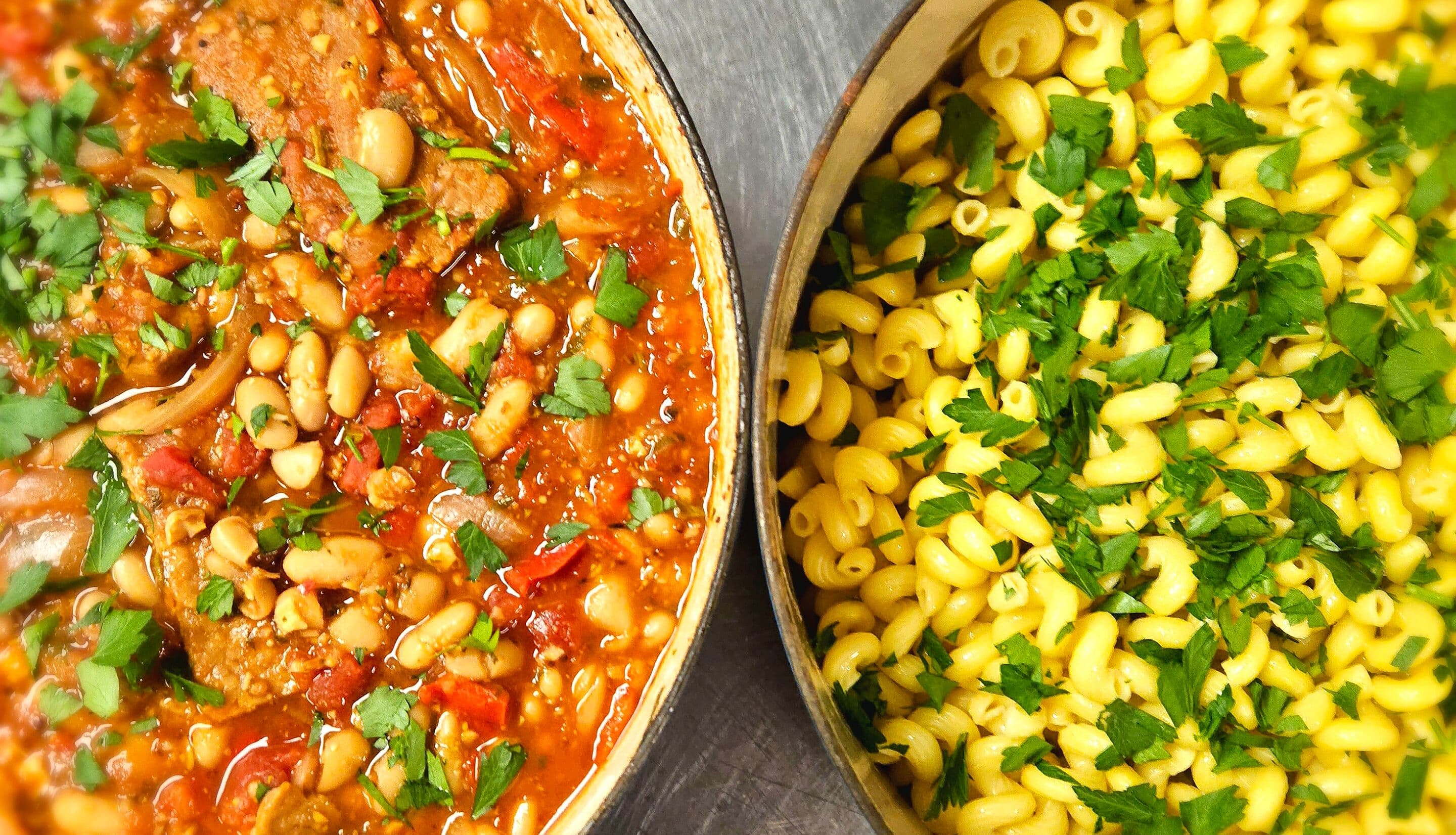Explore Plant-Forward Eating
Ines Cheng, Nutrition Strategy Manager & Camille Finn, Wellbeing & Food Environment Portfolio Manager

Plant-forward eating has gained momentum in recent years as people explore its numerous health benefits, environmental advantages and cost-effectiveness. One of the key pillars of this lifestyle is incorporating plant-based foods into daily meals. Whether you're looking to adopt a fully plant-based diet or simply want to eat more plants, this guide will help you through your journey.
The Benefits of Plant-Forward Eating
Research consistently highlights the health benefits of eating more plant-based foods. For one, plant-forward eating encourages a diverse intake of vegetables, beans, lentils, nuts, seeds and whole grains. This variety ensures a broader range of nutrients, promoting overall health and well-being. Additionally, eating more plant-based foods has been linked to improved heart health. According to the CDC, heart disease remains the leading cause of death in the United States. Plant-based diets, which are higher in fiber and lower in saturated fats compared to diets rich in animal products, help lower LDL “bad” cholesterol and reduce blood pressure — key factors for maintaining cardiovascular health.
Another significant advantage of plant-forward eating is its association with a reduced risk of type 2 diabetes. Diabetes, a condition caused by high blood glucose levels, affected 11.6% of the U.S. population in 2021 with another 38% identified as having prediabetes. Plant-based diets, rich in fiber and nutrient-dense foods, support blood sugar control and can help manage weight, reducing the risk of developing type 2 diabetes.
Beyond personal health, plant-forward eating offers meaningful environmental and financial advantages. Producing plant-based foods requires less water, land and energy than animal-based foods, making it a more sustainable choice for the planet. Financially, plant-based proteins such as beans, lentils and grains are often more cost-effective than animal proteins, providing a budget-friendly way to ensure a nutritious diet. By embracing plant-forward eating, you not only invest in your individual health, but also contribute to the broader well-being of the environment.
Simple Protein Swaps
Eating more plant-based doesn't have to be daunting. Start by swapping out animal proteins for plant-based alternatives in your favorite dishes. For example, beans, lentils or peas can replicate the texture of ground meat in tacos or chili. Tofu cutlets, which can be marinated for added flavor, make an excellent substitute for chicken breast. For dishes that traditionally feature steak, seitan offers a chewy texture and absorbs seasonings well.
If you enjoy pulled pork or shredded chicken, try jackfruit as a plant-based alternative. Tempeh can replace bacon, offering a slightly crumbly texture perfect for a Tempeh, Lettuce, and Tomato (TLT) sandwich. Nutritional yeast provides a nutty, cheesy flavor that works well as a substitute for cheese, while also being fortified with vitamin B12. When it comes to dairy, soy milk offers higher protein content compared to other plant-based milk options, and aquafaba (chickpea liquid) can be used in baking as an alternative to egg whites.
Tips for Eating More Plants
Plant-forward eating is easier when you start small. Consider introducing plant-based options once a week, such as participating in Meatless Mondays or Plant Power Tuesdays. Incorporate variety into your meals by including a range of colorful vegetables, which not only provide essential vitamins and minerals, but also small amounts of protein that add up throughout the day.
Stocking up on versatile and shelf-stable essentials can make meal preparation more convenient. Ingredients like tofu, tempeh, quinoa, beans, nuts and seeds are excellent staples to have on hand, along with non-dairy milk and cheese options fortified with calcium and vitamin D. Fresh or frozen fruits and vegetables round out a plant-forward pantry. Focus on adding plant-based foods to your meals rather than eliminating animal products entirely. For instance, sprinkle nuts and seeds on your morning yogurt or smoothie, or add lentils to ground beef for a blend of plant-based and animal proteins.
By taking gradual steps and focusing on inclusion rather than restriction, you can enjoy the benefits of plant-forward eating while discovering new flavors and textures that enhance your meals. Whether you're seeking improved health, a smaller environmental footprint or more budget-friendly meal options, plant-forward eating offers a versatile and delicious way to meet your goals.


